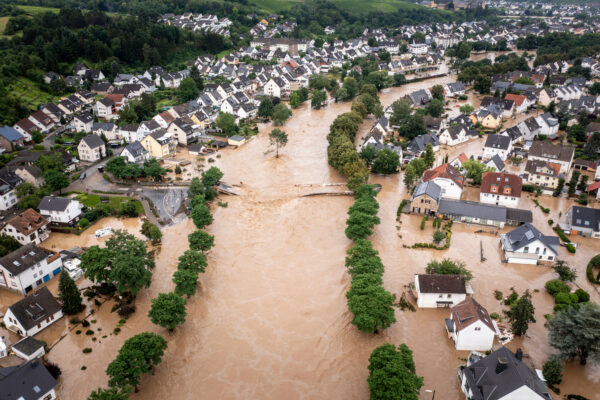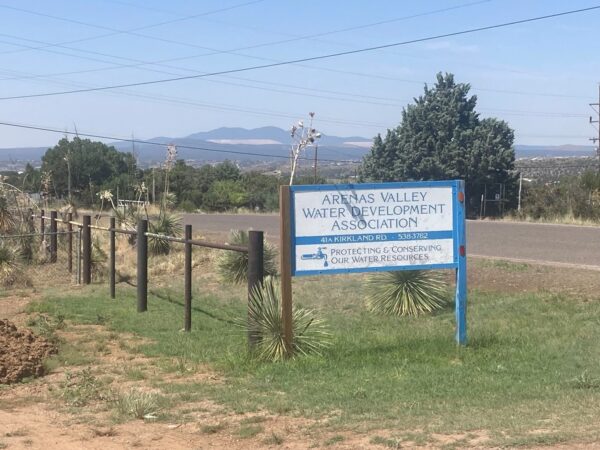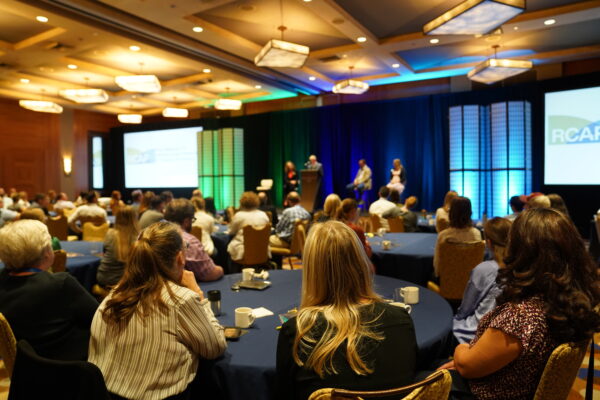
Protecting Rural Water Systems in the Digital Age
Elaine is a small town in Phillips County, Arkansas. One of the city’s most urgent challenges is its aging water infrastructure. Elaine Waterworks oversees a sprawling 34-mile system — the largest in Arkansas — with equipment dating back nearly 70 years. Parts of the system are so outdated that replacing key components, like pumps and panels, has become nearly impossible. The original well, unused but still standing, is more than a century old.
In response, the city partnered with the Community Infrastructure Team at Communities Unlimited (CU) through a referral from the Arkansas Department of Health (ADH). With technical assistance from CU Community Environmental Management Specialist Deborah Brown, Elaine began applying for infrastructure upgrades — not just to modernize the physical system, but to defend it against 21st-century threats.
Why Cybersecurity Matters for Water Utilities
Water systems, especially in small towns, are increasingly vulnerable to cyberattacks that can disrupt service, compromise water quality, and erode public trust. The threat landscape for industrial control systems (ICS) is evolving, with advanced cyber threats now targeting rural systems more frequently as “soft targets.” Failing to update Operational Technology (OT) leaves communities in an undefendable posture.
Elaine Waterworks decided to step up and encourage the city to apply for an estimated $302,563 from the Arkansas Natural Resources Commission (ANRC) to replace more than 600 water meters with radio-read models and install a Supervisory Control and Data Acquisition (SCADA) system. These upgrades will enable real-time, remote monitoring of water pressure, levels, and chlorine — essential for early detection and rapid response to system issues.
“Until Communities Unlimited brought it up, I hadn’t even considered cybersecurity,” said Mayor Gilbert. “But with technology advancing and us being so far behind, it became clear that cybersecurity needs to be part of our system upgrade. We can’t afford to ignore it anymore.”
Her realization followed a wake-up call in 2023, when a lightning strike damaged the system, leading to an unnoticed drop in water pressure and a subsequent boil order. With a SCADA system in place, that incident could have been identified and addressed much faster.
Natural disasters like lightning strikes or floods don’t just disrupt service, they can expose weaknesses in utility operations and highlight the importance of having a disaster recovery and incident response plan. In fact, these events often become the catalyst that forces communities to modernize. The result: stronger, smarter, and better-protected infrastructure.
Building a Cyber-Resilient System
Elaine’s decision to design its new system with cybersecurity as a built-in feature — not an afterthought — represents best practice. It’s a forward-looking approach that helps preserve public trust, reduce service outages, and limit the costly fallout of a cyber incident.
The city’s investment in resilience reflects a broader strategy to protect rural critical infrastructure. As threats become more sophisticated and opportunistic, rural systems without protections become more likely targets. Disaster recovery must include all types of incidents — not just natural disasters but cyberattacks and system failures as well.
10 Steps to Strengthen Water Utility Cybersecurity:
Strong Password Policies: Require complex, frequently updated passwords.
Regular Software Updates: Patch vulnerabilities by updating all software.
Network Segmentation: Isolate sensitive areas of the system to limit access.
Firewalls & Intrusion Detection: Monitor network traffic for suspicious activity.
Data Encryption: Protect data both at rest and in transit.
Access Controls: Ensure employees only access what is necessary for their roles.
Regular Security Training: Educate staff on cyber threats and phishing risks.
Incident Response Plan: Prepare a clear action plan for cyber incidents and disaster recovery.
Backup Data Regularly: Keep secure backups and test recovery processes.
Monitor & Log Activities: Track and review system activity for unusual patterns.
By incorporating these best practices, utilities like Elaine Waterworks can boost operational resilience and safeguard public health and safety.
Elaine’s commitment to cybersecurity, paired with infrastructure upgrades, represents a model for other rural towns. It shows what’s possible when small-town leadership is matched with the right support.
“This kind of technology could be a game-changer for us,” Mayor Gilbert said.
Harold Fisher, a Service Technician with cybersecurity expertise at Communities Unlimited, contributed technical insight to support this article.
This article was funded under RCAP’s USDA Technitrain 24 – 25 grant.

Complying with the U.S. EPA’s Lead and Copper Rule Improvements (LCRI)
As the U.S. Environmental Protection Agency (EPA) works to strengthen drinking water regulations throughout our country, utility operators and managers are overwhelmed with the daunting task of determining how they will comply. The EPA has been working to modify the 2021 Lead and Copper Rule Revision (LCRR) to bolster public health protections, reduce complexity, and streamline the implementation process for public water suppliers (PWS). While their intentions are admirable, they have drastically increased the workload for the public water sector. According to a recent survey conducted by the Brookings Institution, “approximately one-third of U.S. drinking water and wastewater operators will be eligible for retirement by 2028.” To further explain the impact this will have on water and wastewater utilities, it is estimated that 85 percent of utilities have three or fewer employees.
In December 2023, the EPA provided an informational webinar inviting stakeholders to review and provide comments back regarding their proposed Lead and Copper Rule Improvements (LCRI). The three main focus areas of the LCRI are to replace the lead service lines, reduce complexity for public health protection, and increase transparency and inform the public. The hot topic contained within the proposed LCRI requires public water systems (PWSs) to remove all lead service lines, as well as galvanized pipes downstream of lead pipes, and pipes of unknown materials within 10 years. This requirement applies regardless of whether the lines have exceeded lead action levels or caused lead exposure or human health impacts. In a recent survey, it is estimated that 9.2 million lead service lines exist in our cities and towns across the country. Additional research has identified an average replacement cost of approximately $4,700 per line. This results in an estimated $43.24 billion is needed to comply with EPA’s LCRI regulation.
One might ask, “How is the federal government supporting EPA’s initiative to reduce lead exposure in drinking water?” In November 2023, the Biden-Harris administration announced a new “Get the Lead Out (GLO) Initiative” to support EPA’s mission of accelerated removal of lead service lines nationwide. The GLO Initiative complements the Bipartisan Infrastructure Law (BIL) that was signed in 2021, providing a historical $50 billion investment in water and wastewater infrastructure. A major component of the BIL’s water investment is to finance the replacement of lead service lines. The law specifically allocates $15 billion for this purpose, with an additional $11.7 billion in general Drinking Water State Revolving Funds that can also be used for lead service line removal.
What does all of this mean for public water suppliers? While there appears to be funding available to help offset the financial burden the LCRI will have on our water sector, a substantial shortfall exists in the human infrastructure required to comply with the LCRI regulation. The Midwest Assistance Program, Inc. (MAP) is assisting utility operators in conducting materials evaluations of their drinking water distribution systems and categorizing these materials following EPA’s guidelines. Once a materials evaluation has been completed, MAP staff is capable of assisting utility operators with lead service line replacement plans, securing funding for the removal of lead components identified throughout the system, and developing a variety of public education materials to adequately inform and encourage homeowners to comply with EPA’s initiative to “Get the Lead Out”!
If you are a utility operator struggling to complete your lead service line inventory, start with a simple survey that can be distributed to your utility customers through a variety of platforms. Provide a mail-in option, a link to your website or social media page, or include a scannable QR code on your utility statement to simplify the survey process. At a minimum, the following questions should be included in your materials survey:
What type of structure is this?
Does this structure use any type of water filtering system?
What is the most common type of plumbing in this structure?
What is the 2nd most common type of plumbing in this structure?
What year range was your plumbing installed?
Remember, the time to act is NOW!
This article is funded by EPA under RCAP’s NPA 1 23 – 25 grant.

Navigating Through the Waters of WEP Disaster
Benjamin Franklin is quoted as saying, “Nothing is certain except death and taxes.” While I have the greatest respect for Mr. Franklin, another certainty is that disasters will also happen. The uncertainty is where or when. Weather events like hurricanes, tornados, earthquakes, and flooding are not only a certainty, but the frequency and intensity of these occurrences have increased as well.
Kentucky experienced one of these extreme weather events in the summer of 2022. Between July 25 and July 30, 2022, several complex thunderstorms brought heavy rain, deadly flash flooding, and devastating river flooding to eastern Kentucky and central Appalachia. Per the National Weather Service radar-based rainfall estimates, upwards of 14-16 inches of rain fell during this five-day period in a narrow swath, with many more locations receiving 6-10 inches of rain. As a result of this 1,000-year flooding event, many of the residents living in the affected communities lost most of their physical possessions while some lost their lives. Utilities in several of these southeastern Kentucky counties were gravely impacted, including the Letcher County Water District (LCWD) and the small city of Fleming-Neon in Letcher County, Kentucky. Most of LCWD’s distribution assets were severely damaged during these events including watermains/waterlines, residential and non-residential water meters, ground water storage tanks, and pressure reducing valves. Fleming-Neon’s waterlines were pulled from the ground and washed away in the flood waters. Fleming-Neon’s wastewater treatment plant was affected, and many wastewater collection lines and lift stations were severely damaged. With all this devastation, where would funding assistance come from?
Luckily for the rural utility systems in Kentucky, another certainty is that the United States Department of Agriculture (USDA) is always there to assist in times of need. USDA’s Rural Utilities Service announced the acceptance of applications under the Calendar Year (CY) 2022 Disaster Water Grants Program for Fiscal Year (FY) 2023: Water Environmental Programs (WEP). This grant program would help eligible communities pay expenses related to damages (Presidentially Declared Disasters) that occurred between January 1, 2022 and December 31, 2022. Kentucky received a direct allocation of approximately $10 million, with the allocation of funds distributed on a competitive basis so the completion/submission of complete applications to RUS in an accelerated manner would be critical.
RCAP staff assisted LCWD with the completion of the Flood Damage Replacement Project WEP Disaster Grant application to replace remaining old and damaged magnetic drive meters with new ultrasonic meters and adopting a single billing software. The proposed project would return the residential metering network to its homogenous pre-flood state and improve meter reliability and operational efficiency. RCAP staff assisted Fleming-Neon with the completion of the Water Distribution System Replacement Phase 2 WEP Disaster Application for drinking water to replace waterlines and appurtenances inside the city limits of Fleming-Neon that were severely damaged by the flooding. Additionally, RCAP assisted the city with a wastewater WEP Disaster grant application where WEP Disaster funding would be utilized as a match for FEMA funding to perform rehabilitation on several flood damaged wastewater lift stations in the collection system outside city limits. All three applications were submitted through RD Apply to RUS in an expedited fashion. In addition to damage repairs and replacement grants to communities, USDA RD provided additional funding so that RCAP could assist with submitting full applications and developing system capacity and resiliency to reduce or eliminate long-term risks from future events. Additionally, RCAP is assisting LCWD and Fleming-Neon with updating their Risk and Resilience Assessments and Emergency Response Plans so they can be more aware of potential disasters and be better prepared to deal effectively with those events.
As a direct result of RCAP’s assistance, LCWD secured WEP Disaster Grant funding in the amount of $2,571,000 while Fleming-Neon secured WEP Disaster Grant funding in the amount of $5,407,000 for the drinking water project and $1,774,000 for the wastewater project. The three projects accounted for the entire amount of Kentucky’s direct allocation. These grant awards, along with the unwavering resiliency of Letcher County residents, will go a long way as these communities move toward recovery. USDA and RCAP will continue to assist these communities to not only survive, but to thrive.
This article is funded by USDA under RCAP’s WEP Disaster TA 2024-2026 grant.

How a Revenue Analysis Can Ensure Water Security for Communities
Arenas Valley, or “Sandy Valley” as it might be loosely translated in English, lies along US 180 in Grant County, New Mexico. This stretch of towns —Hurley, Bayard, Santa Clara, Silver City— draws its lifeblood, in part, from the mixed red and green ores that abound nearby: copper. Traveling along this dry but scenic corridor, one is quickly reminded of something even more important: water.
The importance of water became clear during a visit to the Arenas Valley Water Development Association (AVWDA), which serves about 500 customers in one of the most rural portions of this corridor. During a recent visit, RCAC staff watched people come in to pay their bills and take the time to talk with Julie Dubiskas, AVWDA’s office manager since 2005. Between customers, she explained the importance of water, the many improvements made to the water system and the wonderful people she has worked with over the years.
Dubiskas also pointed out the challenges the water system faces: aging meters, distribution line breaks, and the loss of board members. Arenas Valley pulls all its water through an 8-inch transmission line from the Town of Silver City, located several miles away.
“One of the biggest challenges is paying for the water we purchase,” Dubiskas said. “As a purchased water system, we have less control over our costs. When Silver City increases its rates, we have to pass those costs along.”
Recognizing these challenges, the association reached out to Karl Pennock, a Small Utility Consultant with the Rural Community Assistance Corporation (RCAC), in June 2024. Following an initial kick-off call, RCAC began working with the Association to review its revenue needs. They identified approximately $6M in water system improvements over the next several years, including the extension and replacement of waterlines and meters.
The current revenue analysis aims to ensure that the Association has the capacity to meet its forecasted operating, debt service, and reserve needs over the next five years. A combined revenue/rate analysis review was completed in October 2024 with a presentation to the board conducted on October 23, 2024 with RCAC’s assistance. At the Association’s request, RCAC plans to provide further assistance, including a rate analysis that will optimize operating revenue while recognizing the Association’s water conservation efforts. The association continues to make progress on two key projects that will reduce chronic water loss: 1) replacement of deteriorated waterlines on the east and west legs of Arenas Valley Rd. along U.S. Hwy 180 with bid opening occurring today; and 2) installation of new radio-read water meters and related billing software.
By reaching out to residents and other communities along the mining corridor, the rate analysis will streamline access to funding. The proposed infrastructure improvements will ensure greater water security as the system considers becoming part of a larger regional waterline planned for the area. RCAC is proud to support the Arenas Valley Water Development Association as it looks to the future.
This article is funded by USDA under RCAP’s Colonias 2023-2024 grant.

The Value of Income Surveys
Access to funding has been, and continues to be, a central thread in how the Rural Community Assistance Partnership (RCAP) increases a community’s technical, managerial, and financial capacity. How access to funding happens comes from potentially numerous different possibilities and hurdles for technical assistance (TA) providers like RCAP. From collaborating with a community on an Emergency Response Plan (ERP), providing a rate assessment, or building a service line inventory, these all help toward building capacity and help with funding program requisites. RCAP provides diverse types of services through federal grants and prioritizes the needs of the community to fit the best financial outcome that also satisfies public health and environmental protection. For small and rural communities, the approach to funding often comes with a desire for loan subsidies or grant resources. When addressing loan/grant scenarios, one of the best services RCAP provides are community characteristic surveys, specifically income surveys. These surveys supply a snapshot that highlights the data needed to identify and figure out funding programs that meet a community’s needs.
Community characteristic data immensely helps to show and express a narrative that opens opportunity for a community. Using available census data supplies useful information but may not capture or be representative of a community. This is the case for many small and rural communities where eligibility criteria, like the Median Household Income (MHI), may not be available or accurate. MHI is used by many community funding houses as a primary financial identifier for grant/subsidy allotment. The MHI is calculated from an income survey of a community or a Universe. Universe is used to refer to the pool of households that are being surveyed. Different community sizes and project details will vary the amount in a Universe from survey to survey. but each survey must have a goal for completed surveys. The goal is the minimum number of completed surveys to ensure the calculated results are representative and accurate. Even working through various funding houses, RCAP can step in and provide trusted third-party income surveys for communities in need of characteristic data and reports.
There are useful assessments using the income survey data. Calculating the MHI from an income survey gives us two things: one, a baseline to work with and; two, the ability to compare the data with other known data. For example, calculating a community’s affordability index uses MHI and the average annual customer fee. The affordability index, or ratio, is a great way to assess if there is potential distress for the customers. The average annual customer bill can be the current average customer fee, or a predicted amount could be used. Using a predicted amount can help especially working through debt service increases like a capital improvement loan that will lead to rate increases. The affordability index that compares MHI to average fee works out to be a percentage. This percentage is the part of annual income that is used for the utility bill. The funding house may have different values and thresholds for affordability. For example, a community with an MHI of $55,000 per year and has a water bill that will equal $1,000 per year to fund required lead line replacement may be eligible for subsidies under the affordability criteria with the funder, if a threshold of 1.5% is set. In this same way a community can also use the affordability index to measure fairness and potential distress when considering the long-term impact of projects costs and dealing with necessary rate increases. Taking this step can provide the customers with a level of trust and care. Ensuring communities can be resilient to project costs by looking at the income data is significant to financial capacity. RCAP is grateful to provide TA with its broad base of knowledge and resources to support the future of these communities.
Looking at just a few aspects that use income survey data, like eligibility, affordability index, and measuring fairness, shows the potential value of an income survey to a community. Each community has unique characteristics, helping to identify the characteristics is a major step in getting access to funds. RCAP continues to build ways to help communities with financial needs. Fiscal viability is tied into revenue streams that come from the customers on the utility. When looking at the impact of project costs on a community, RCAP provides the services to open opportunity and increase capacity. The value of income surveys can truly bridge a connection between a capital improvement project and the funds required to make it happen.
This article is funded by EPA under RCAP’s EPA EFC 23 – 27, Cat 3 grant.

Building Capacity for Rural Water: Highlights from RCAP’s 2025 SRF Workshop
Last week, the Rural Community Assistance Partnership Incorporated (RCAP) gathered over 140 attendees from 36 states and territories for the 2025 National State Revolving Fund (SRF) Infrastructure Financing & Training Workshop in Seattle, Washington. The event brought together federal and state officials, technical assistance providers, utility leaders and more to tackle one of the most pressing challenges facing rural and tribal communities: accessing critical federal water infrastructure funding.
The three-day program featured a mix of plenary discussions, training and peer-to-peer networking designed to strengthen SRF access for rural and tribal communities. Sessions explored innovative financing models, affordability mapping tools and strategies to braid SRF dollars with other funding sources. Among the many sessions offered included:
One Stop Shop for Drought Mitigation: Connecting Utilities to Critical Funding
Prioritizing Regionalization in Funding Policy: A Case Study from New Mexico
Mapping Water Affordability
Building Bridges to Funding: A Georgia Co-Funding Success Story
Tools & Resources to Help Inform TA Delivery and Potential SRF Program Revisions
Glenn Barnes, Director at Water Finance Assistance, underscored the workshop’s value: The workshop format allowed for information exchange between the various groups who touch the different parts that make up the SRF program. The conversations during the sessions will strengthen these important funding programs and will lead to small and rural communities accessing the money they need to sustain their infrastructure for years to come.”
As federal policymakers continue to debate future infrastructure investment, this workshop served as a critical reminder that with the right skill set and support, rural communities can overcome systemic barriers and deliver safe and reliable water and wastewater services for generations to come.
“This workshop was not just about understanding funding programs, but about bringing people together, sharing ideas and giving communities the tools they need to succeed,” said Olga Morales-Pate, RCAP’s chief executive officer. “SRFs are a vital resource for addressing our nation’s water infrastructure challenges, and it’s inspiring to see so many partners committed to making them more accessible. RCAP is excited to keep building on this momentum and to continue hosting this workshop in the years ahead.”

RCAC Helps Kotzebue Navigate Arctic Water Crises
KOTZEBUE, Alaska — After weeks of punishing Arctic temperatures in the winter of 2024, residents served by the Swan Lake Water Loop in Kotzebue, Alaska, met a harsh reality: their water had stopped running. For this predominantly Iñupiat community of 3,100 situated on a narrow sand spit above the Arctic Circle, it was the second major water crisis in less than a year.
The first emergency began in late 2022, when anaerobic bacteria—a bacteria that does not cause health problems—infiltrated the pipeline from Devil’s Lake, Kotzebue’s primary water source. Iron and manganese levels rose, clogging filters just as the city was bringing its new water treatment plant online.
Before that situation could be fully resolved, back-to-back blizzards in March 2023 buried the town under historic snowfall, knocking out power across the community. With electricity down, the water treatment plant’s pumps stopped—a vulnerability made worse because the backup generator had not yet been installed at the new facility.
Then came the Swan Lake Water Loop crisis. The emergency began on Feb. 5, 2024, when an extreme cold period caused the water main and many service lines to freeze. This disruption cut water service to approximately 190 homes. Some households went without running water for almost two months before their service line was thawed.
“Once a water main freezes, all the services connected to the main can freeze too,” explained Greg Magee, a Small Utility Engineering Consultant with the Rural Community Assistance Corporation (RCAC) who has over three decades of experience working in Alaska on rural water systems. “That’s tough.”
Throughout both emergencies, community members demonstrated remarkable adaptability. During the Swan Lake Loop freeze, the city provided bottled water and access to a watering point at the water treatment plant. Many resorted to getting water from neighbors who were not affected or from cutting and melting lake ice for basic household needs. Local schools opened locker rooms so residents could shower.
“They’re determined,” said Magee. “One disaster after another, and they just came back fighting.”
The crisis drained the city coffers. The price tag for temporary repairs to the plant amounted to nearly $100,000 and a whopping $1.35 million to fix the Swan Lake Loop. However, a full replacement of the loop would cost up to $30 million. With limited funds available, city officials declared a local emergency and successfully secured additional disaster declarations from both borough and state governments.
For help navigating the complex world of federal disaster assistance, Kotzebue turned to RCAC. Magee helped the city apply for two grants through the United States Department of Agriculture’s (USDA) Emergency Community Water Assistance Grant (ECWAG) program, which provides up to $150,000 to help rural communities recover from drinking water emergencies.
“ECWAG can only cover part of the costs, but every bit helps,” Magee noted. “Small villages don’t have a lot of revenue sources — primarily state revenue sharing funds and maybe a sales tax.”
With RCAC’s guidance, Kotzebue submitted two grant applications in November 2024: $99,242 to reimburse the treatment plant repairs and $150,000 toward the $1.35 million cost to thaw the Swan Lake Loop. Both applications are still under review by USDA Rural Development and pending final approval.
Throughout remote Alaska, communities like Kotzebue struggle with similar infrastructure challenges: water systems constructed decades ago now showing their age, all while battling some of the harshest weather conditions in North America. In the case of the Swan Lake Water Loop, engineers had already identified vulnerabilities and were designing improvements, but the extreme cold struck before these upgrades could be put in place.
Kotzebue continues to face water quality challenges. In February 2025, the city issued a public notice about elevated manganese levels related to the original Devil’s Lake contamination. Meanwhile, a full replacement of the Swan Lake Loop is estimated at $30 million—funding the community will need significant outside assistance to secure.
Despite these challenges, Kotzebue continues its efforts to rebuild. The town has already secured capital funds for permanent repairs to the water treatment plant. Local contractors supported public works teams during the crisis, demonstrating the community’s self-reliance when facing overwhelming challenges.
Yet local ingenuity alone is not enough. Without support from the Rural Community Assistance Partnership (RCAP) network, communities like Kotzebue would face significant hurdles in accessing federal funding. The complex application process for USDA programs requires expertise that small communities often lack, especially when local staff are already managing emergency repairs and maintaining essential services. As RCAP’s western regional partner, RCAC has played a crucial role in helping Kotzebue navigate these waters and secure the funding necessary to rebuild and strengthen its water infrastructure.
Across rural Alaska, towns continue managing with infrastructure that was built decades ago, all while facing increasingly extreme weather conditions. For communities with limited resources, securing funding is about more than just fixing what is broken—it’s about survival.
“It’s a continuous process,” Magee said, reflecting on his decades of work with Alaska communities, “One step at a time, that’s how these systems eventually get repaired and replaced.”
This article is funded by USDA under RCAP’s Technitrain 2024-2025 grant.

Attracting Young Talent to the Water Infrastructure Industry
In today’s ever evolving world, it is crucial to bring fresh perspectives and innovative ideas to the table. According to a recent study by McKinsey & Co., over 70% of American Millennials define their sense of purpose through work. Millennials seek opportunities to make meaningful contributions that align with their broader values. Working in water infrastructure offers diverse opportunities to contribute positively to society while allowing those in the field to enjoy a fulfilling and impactful career. However, attracting young professionals, including the emerging Generation Z workforce, to the water industry has proven challenging. So, what steps can your utility take to attract new talent?
First and foremost, meet young workers where they are. Traditional methods, such as posting job openings solely on community or government websites, are no longer effective. Water utilities and communities need to expand their outreach by partnering with educational institutions such as high schools, colleges, and universities. Raising awareness of career opportunities through workshops, internships, job fairs, and industry events can help illuminate the exciting and impactful career paths available in water management.
Employee expectations have also changed and to attract young talent; it is essential to highlight the potential for career advancement, ongoing professional development, and continuous learning in the water infrastructure sector. The water industry is rapidly evolving, with advancements in technology playing a key role in driving efficiency and sustainability. By offering training programs, mentorship opportunities, and access to technology, organizations can demonstrate their commitment to nurturing the next generation of water professionals. Young professionals passionate about innovation and sustainability can find a perfect fit in this dynamic field.
Young professionals are increasingly concerned about environmental issues and sustainability in their career field. By emphasizing the environmental impact of water infrastructure projects and the role they play in preserving natural resources, small utilities can appeal to environmentally conscious individuals looking to make a positive difference in the world. From smart water meters to advanced treatment processes, there are endless possibilities to make the difference job seekers are looking for in their careers.
Bringing young people into the water infrastructure industry is crucial for driving innovation, sustainability, and growth. While wages will always be an issue for smaller utility systems, they can compete by leveraging technology, promoting career development, seeking candidates with environmental awareness, and collaborating with local educational institutions. Rural and community utilities need to be just as forward thinking as other industries to attract the next generation of talented water professionals. Having the right people in place can go a long way to solving potential issues and helping future proof a system against upcoming problems. The importance of good operators cannot be overstated and should not be overlooked by smaller systems when looking towards the future of community water supply.
This article is funded under RCAP’s EPA NPA 1 2023 – 2025 grant.

Breakpoint Chlorination: What is it? Why is it so important?
How many operators truly understand breakpoint chlorination? Both new and experienced operators continue to face challenges in comprehending its significance and determining whether their system has achieved an adequate residual level. Breakpoint chlorination is not simply about attaining an arbitrary free chlorine concentration. It is, in fact, defined as “the point at which enough chlorine has been added to a quantity of water to satisfy its disinfecting demand” (Breakpoint Chlorination).
While newer operators are still familiarizing themselves with the concept of breakpoint chlorination, even seasoned professionals often find it difficult to fully grasp its implications. Furthermore, how can operators be certain that their system has reached an adequate residual level? This question warrants further consideration. To clarify, breakpoint chlorination is not about reaching a random free chlorine value but about ensuring the system is properly disinfected and the required demand has been met.
Stage 1: Chlorine Demand
In this stage, chlorine is first introduced to water where it will react with reducing agents like hydrogen sulfide, iron, and manganese. During this stage, all the chlorine is consumed by the reducing agents which will result in no free chlorine residual. This is known as “Zone 1” of the breakpoint chlorination curve.
Stage 2: Formation of Chlororganics and Chloramines
It is well documented that ammonia is present in water. Because of that, as chlorine is increased, it will begin to react with ammonia to produce monochloramine, dichloramine, and trichloramine. Many communities disinfect with chloramines because chloramines maintain a residual longer in a long distribution system. The major drawback with chloramines includes taste and odor issues as well as they are a less effective disinfectant. This is known as “Zone 2” of the breakpoint chlorination curve.
Stage 3: Destruction of Chlororganics and Chloramines to Breakpoint
Here is where all the chlororganic and chloramine compounds that have been formed begin to break down with the addition of more chlorine. It is here where customers will complain that there is too much chlorine in the water. It is also here that when these complaints come in, the chlorine feed does not get decreased but rather increased instead. That is right, that just doesn’t seem to make any sense whatsoever. Once the compounds are destroyed, the breakpoint curve will drop. Any residual at this point will be total chlorine. This is known as “Zone 3” of the breakpoint chlorination curve.
Stage 4: Free Chlorine Residual
Here in “Zone 4”, the addition of chlorine will be strictly free, available chlorine that is highly effective for disinfection. In this zone, the residual chlorine is present to ensure ongoing protection against recontamination as the water travels throughout the distribution system.
At the beginning of this article, we stated that many operators are unsure whether their system has reached an adequate residual level. In order to determine whether said system has reached the adequate residual level, collect your instantaneous sample and divide it in half. One of the samples will be tested for total chlorine, while the other needs to be tested for free chlorine. Once you obtain your residual results, take the free chlorine and divide it by total chlorine then multiply it by 100. If your result is greater than 75% then you have an acceptable chlorine residual level. Although 75% is an acceptable result, your best result will be 80% or greater.
Free Chlorine ÷ Total Chlorine × 100 = Percent
This article was funded under RCAP’s EPA NPA 1 23 – 25 grant.